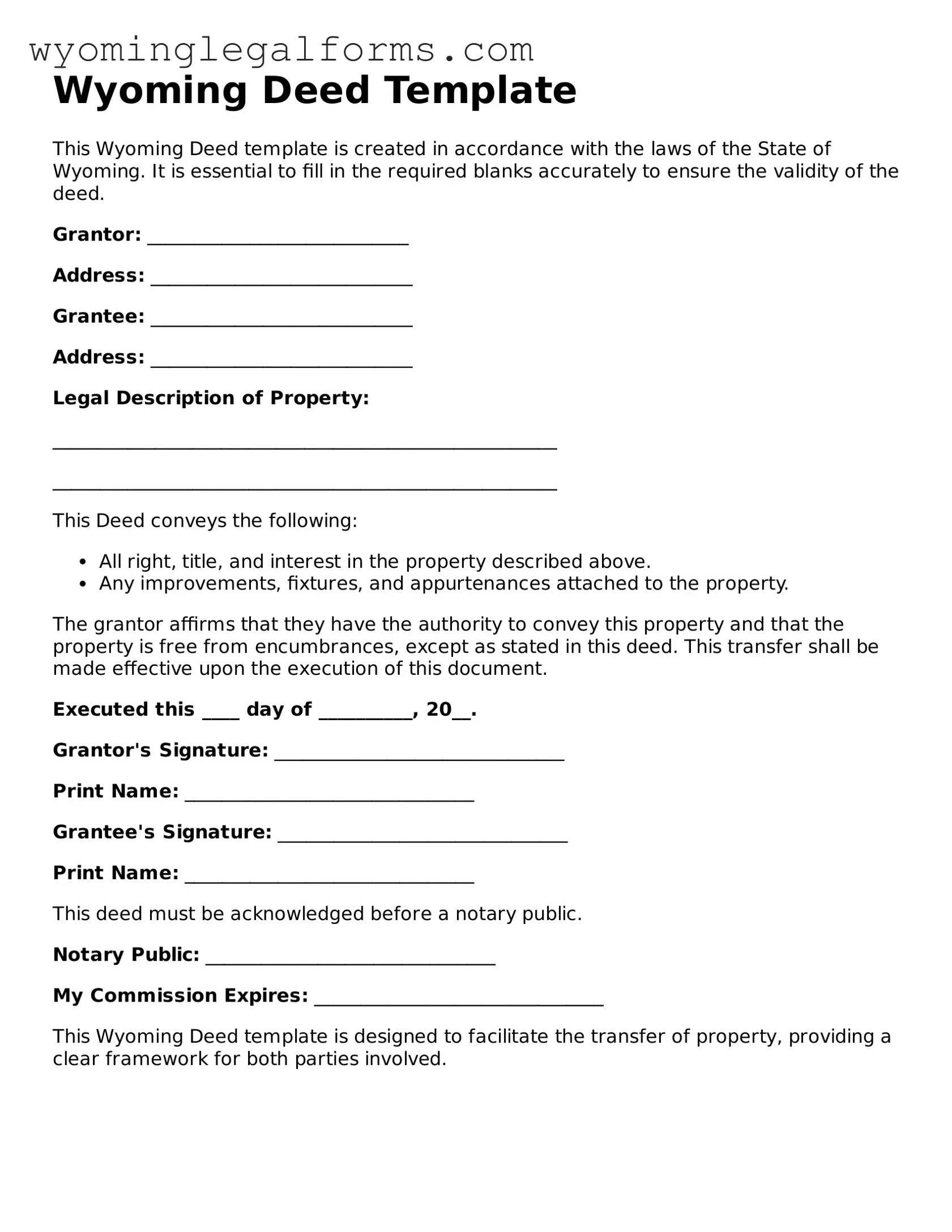What is a Wyoming Deed form?
A Wyoming Deed form is a legal document used to transfer ownership of real property from one party to another within the state of Wyoming. This form outlines the details of the transaction, including the names of the parties involved, a description of the property, and any terms or conditions related to the transfer. It serves as a public record of the change in ownership.
What types of deeds are available in Wyoming?
In Wyoming, there are several types of deeds, including Warranty Deeds, Quitclaim Deeds, and Special Warranty Deeds. A Warranty Deed provides the highest level of protection to the buyer, guaranteeing that the seller holds clear title to the property. A Quitclaim Deed transfers whatever interest the seller has without any warranties. Special Warranty Deeds offer limited guarantees, covering only the time the seller owned the property.
How do I complete a Wyoming Deed form?
To complete a Wyoming Deed form, you will need to provide specific information. Start by entering the names and addresses of both the grantor (seller) and grantee (buyer). Next, include a legal description of the property, which can typically be found in previous deeds or property tax records. Finally, sign and date the form in the presence of a notary public, who will also sign and stamp the document.
Do I need to notarize the Wyoming Deed form?
Yes, notarization is required for a Wyoming Deed form to be valid. The notary public will verify the identities of the signers and witness the signing of the document. This step helps prevent fraud and ensures that the deed is legally binding.
Is there a fee for recording a Wyoming Deed?
Yes, there is typically a fee for recording a Wyoming Deed with the county clerk's office. The fee may vary by county and is usually based on the number of pages in the document. It is advisable to check with your local county clerk for the exact fee schedule.
How do I record a Wyoming Deed?
To record a Wyoming Deed, take the completed and notarized document to the county clerk’s office in the county where the property is located. Submit the deed along with the required recording fee. The clerk will then record the deed in the public records, making it official and accessible for future reference.
What happens after I record the Wyoming Deed?
Once the Wyoming Deed is recorded, the county clerk will return a copy of the recorded deed to the grantee. This copy serves as proof of ownership and should be kept in a safe place. The property records will also be updated to reflect the new ownership, which is important for future transactions or legal matters.
Can I revoke a Wyoming Deed after it has been recorded?
Generally, once a Wyoming Deed is recorded, it cannot be revoked unilaterally. If you wish to change ownership or transfer the property again, you would need to execute a new deed. Depending on the circumstances, you may also need to consult a legal professional for guidance on how to proceed.
Where can I find a Wyoming Deed form?
You can find a Wyoming Deed form through various sources. Many online legal form providers offer templates that you can customize. Additionally, local county clerk’s offices may provide forms or guidance on how to create a valid deed. It is essential to ensure that any form you use complies with Wyoming state laws.
